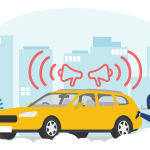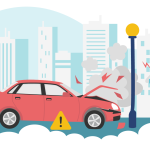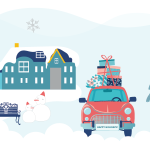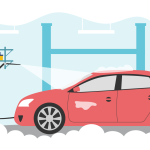Keyless Car Thefts Are on the Rise: 10 Tips You Need to Know
November 1, 2021
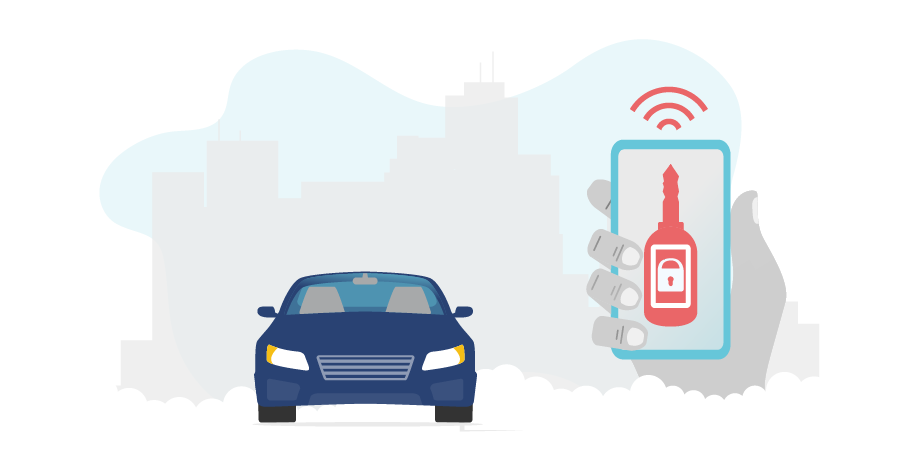
Keyless cars are all the rage these days. No more locks, metal keys, or pass codes—now, all it takes is a radio signal from your key fob. As long as you’re within range, your car will recognize the signal and automatically unlock. And if you have keyless ignition, all you have to do is hit the start button to fire up the engine.
But while there’s no denying the convenience of hands-free entry, keyless cars are being increasingly targeted in overnight auto thefts. How do crooks get in? Since most people leave their keys by the front door, thieves can use electronic devices to locate and amplify the fob signal from inside the house and relay it to the vehicle.

Within as little as 45 seconds and in near silence, crooks can unlock, start, and make away with your car. And as we head into the winter months, longer and darker nights give criminals an even bigger window of opportunity. To help you put the brakes on auto theft, we’ve compiled our top tips on how you can protect your car, keyless or not. Keep reading to learn more!
1. Park safe.
The less accessible your car is, the better. Where possible, park in a closed garage. If you have more than one car, consider “protecting” your more expensive or high-end vehicle by blocking it in with another one in your driveway.
If you don’t have access to a private garage, carport, or driveway, see if you can rent an extra space from a neighbour or find a secure overnight spot, like an underground lot with an attendant and security cameras. If you have to park on the street, look for a well-lit area with lots of foot traffic, particularly if you’re in an unfamiliar neighbourhood.
2. Lock your car.
Before you head inside, give your car a final once-over. Although most vehicles will beep or flash the headlights when you use a remote starter, you should still test the handles just in case. Walk around and confirm that your windows, sunroof, and trunk are fully closed. If needed, cover up your vehicle identification number (VIN) on the dashboard at the bottom of your windshield.
3. Never leave a running vehicle unattended.
Car thefts tend to spike in the winter—and not just because the nights are longer. When temperatures drop, many drivers leave their keys in the ignition (or their key fobs inside the car) to let their cars heat up before they head out. But leaving a running vehicle unattended, even if it’s for a few minutes, is a perfect opportunity for criminals to jump in and drive away. Sure, it’s tempting to come back to a hot and toasty seat on a chilly morning, but it’s better to bundle up and tackle the cold than lose your car in a warm-up theft.
4. Stash your valuables.
Don’t store any valuable items in your car, like money, a GPS device, purses, shopping bags, electronics, or sports equipment. Even if a thief doesn’t want your car, they might want what’s inside it. And even if they don’t, thieves aren’t usually nice enough to leave your strollers or camping gear on your lawn before driving off. Plus, your Auto Insurance likely won’t reimburse you for any stolen belongings, especially if they’re over a certain dollar limit.
If you absolutely have to leave something in your car, make sure it’s stowed out of sight in a locked glove box or in the trunk. That includes less obvious items that you might not even see as valuable, like loose change, a dash cam, sunglasses, or food. And don’t wait until the last minute to put your things away; do it before you reach your destination. If a thief sees what you’re hiding, they might make you their next target.
5. Keep your keys somewhere safe.
It might be convenient to rest your keys by the front door so you can grab them on the way out. But that also puts them in easy reach of relay devices. Instead, try to store your keys in a secure location away from the perimeter of your house; this will reduce the chances of someone detecting the signal.
For good measure, store your key fob in a protective box or pouch like a Faraday bag or a metal container that will block its signal. Be sure to hide your spare fob in a separate but equally safe spot—never leave them in your glove box or under your car mat.
6. Boost your car security.
While most cars today come equipped with a factory installed alarm, these systems are standardized and can quickly be bypassed by experienced crooks. That’s why you should consider adding extra layers of security with a customized secondary alarm system, anti-lock brakes, ignition and fuel pump disablers, or even a tracking device. These features will either make it harder for your vehicle to fall into the wrong hands or easier to locate once it’s gone.
An added perk? Depending on what you choose, you might even be eligible for a discount on your Auto Insurance. All you have to do is provide proof of installation. But not all anti-theft devices qualify for discounts so don’t forget to double check with your broker before buying anything.
7. Boost your home security.
Exterior security cameras can make a huge difference when it comes to car theft. If they’re visible, they might scare off any would-be thieves before they even have a chance to start. If you monitor them regularly, you might spot someone sneaking around your car in advance and have enough time to take precautions. If your vehicle is stolen anyway, your cameras might catch a key detail that could help cops identify the perp. And much like car security, depending on what you install, you may be able to swing a discount on your Home Insurance.
8. Be selective.
It’s a common misconception that thieves only go for classic automobiles or luxury, high-end sports cars. While those cars draw their own crowd, the truth is: the most targeted vehicles are ones that you see on the road everyday, like Honda CR-Vs and Lexus RX 350s. Why? They attract less attention during a heist and it’s easier to resell parts to unsuspecting buyers.
But you don’t have to completely avoid keyless cars if you’re in the market for a new ride. Just to try to stay away from ones that might be particularly desirable to thieves. Plus, if you pick a low-risk vehicle that’s less likely to be stolen, you’re likely to get a low premium. For more guidance, check out the Insurance Bureau of Canada’s list of the top 10 most stolen vehicles here.
RELATED: Four Vehicle Features That Can Impact Your Auto Insurance Costs
9. Secure the right insurance.
Stolen cars aren’t always recovered by the police so it’s key to have the right Auto Insurance to replace your vehicle or repair any damaged parts. Depending on your policy, you might even have the option to add a daily travel allowance for you to rent a car.
But contrary to popular belief, car theft isn’t included in basic auto policies; it’s only covered in comprehensive, all perils, or specified perils insurance. Before you settle on a policy, review your terms and make sure you have enough insurance to cover the full value of your car if it’s stolen or damaged in a break-in.
10. Work with a broker.
While the tips above should help you prevent theft, there’s no guarantee that a determined thief won’t find their way in somehow. That’s why it’s key to work with a broker to help you find the right coverage for your needs.
Brokers like PROLINK are knowledgeable advisors that can help you figure out the value of your car, explore your options, and set you up with a comprehensive Auto Insurance policy so that you’re back on the road in no time. And if you’re worried about being in a high-risk category because of your car or neighbourhood, we can also monitor your rates and proactively help you shop around for a better solution even if you’re already getting a good deal.
To learn more, connect with PROLINK today!
PROLINK’s blog posts are general in nature. They do not take into account your personal objectives or financial situation and are not a substitute for professional advice. The specific terms of your policy will always apply. We bear no responsibility for the accuracy, legality, or timeliness of any external content.
